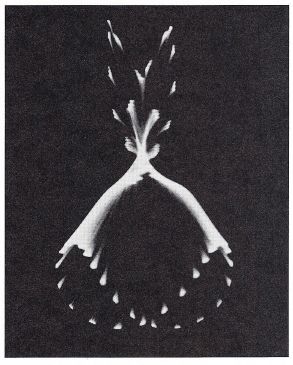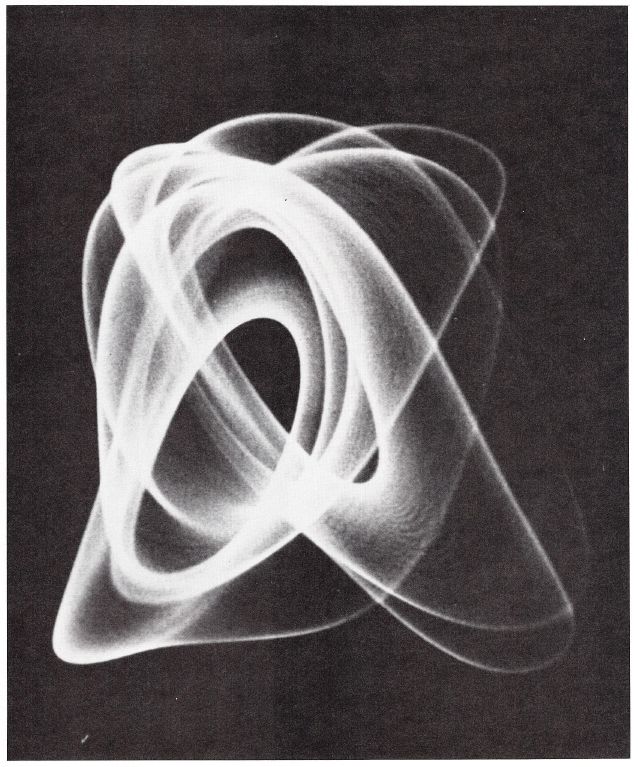BEN F. LAPOSKY
OSCILLONS: ELECTRONIC ABSTRACTIONS
My work in computer art is a form of oscillography, the results of which I have called 'Oscillons' or 'Electronic Abstractions.' These are composed of combinations of basic electronic wave forms as displayed on a cathode ray oscilloscope and photographed. Color compositions are achieved by means of special filter arrangements. The resulting art works are presented in photographic exhibitions, kinetic oscilloscope displays, light boxes, or movies.
The relationship of the oscillons to computer art is that the basic waveforms are analogue curves, of the type used in analogue computer systems. The oscillons have been recognized as being the first major development in this field as abstract art creations, and the first to be widely exhibited and published in America and abroad (over 216 exhibitions, 160 publications since 1952).
I got into oscillographic art through a long-time interest in art or design derived from mathematics and physics. I had worked with geometric design, analytic and other algebraic curves, 'magic line' patterns from magic number arrangements, harmonograph machine tracings, pendulum patterns, and so on. The oscilloscope seemed to me to be a way of getting a wider variety of similar kinds of design and with controlled effects to produce even newer forms not feasible with previous techniques.
My interest in other kinds of art was to some extent in abstract geometric painting, cubism, synchronism and futurism. The oscillons are related to the newer developments of op art, Lumia (light) art, computer art, abstract motion pictures, video synthesizer (TV) art, and laser displays, such as Laserium.
Oscillographic art might be considered as a kind of visual music, as the basic waveforms resemble sound waves. I used sine waves, saw tooths, square waves, triangular waves, and others in various combinations, modulations, envelopes, sweeps, etc. Oscillons usually are not accidental or naturally occurring forms, but are composed by the selection and control of the oscilloscope settings and of varied input circuitry. I used especially modified oscilloscopes for this work, as well as some of my own specifically designed electronic instruments.
The oscillons may be created without the use of an analogue or a digital computer system. It may even be possible, of course, to imagine or to compose some of these patterns without the use of the electron beam tracing them on the cathode ray tube. However, the electronic method greatly extends the possibilities of obtaining new and aesthetically pleasing figures. The oscillons are intended to be a form of creative fine art.

Objections are sometimes made that this and other kinds of computer art are 'machine art'—cold, impersonal, even inhuman. In some cases this may appear to be so, but it is obvious that the machines or instruments that form them are the products of imagination and planning, and at some previous initial point, the work of human hands. The output is conceived and controlled by human intelligence, and the results evaluated by personal aesthetic standards. If the computer is to produce art, it seems to me that the ability for it to do so must be programmed into it.
Cherokee, Iowa
August 1975

'Oscillon 45'
Return to Table of Contents | Previous Section | Next Section

